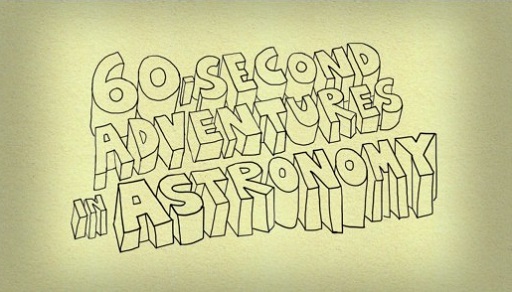4 Your time is not my time
The consequences of Einstein’s insight are profound. This section will look at just one of them, namely that time flows differently for different observers. The following video shows how an imaginary ‘light clock’ can be used to illustrate this rather strange idea.

Transcript: Video 4 60-Second Adventures in Astronomy: Special Relativity
To examine this a bit further with the use of some maths, have a go at the following activity.
Activity 2 The ‘light clock’ thought experiment
Imagine you have two mirrors, set four metres apart. A pulse of light bounces back and forth between the two, as shown in Figure 2.
If the speed of light is 3 × 108 m/s, how long will it take the pulse to make the round trip of 8 metres?
Answer
This round trip of 8 metres is completed in about 27 billionths of a second, or 27 nanoseconds. By keeping count of the number of round trips, as the light ‘ticks’ between the mirrors, you’ve got a ticking clock!
Meanwhile, an astronaut on a passing spaceship (here moving at 60% of the speed of light) watches our clock as she zooms past. Her view at three instants (Figure 3) is rather different. Because she sees the mirrors in motion, the pulse of light now has to travel a longer distance, which can be calculated.
In the time for a return trip, the mirrors have moved by 6 metres. How far does the pulse now have to travel? Hint: note that the pulse is travelling along the hypotenuse of two identical right-angled triangles.
Answer
Pythagoras’ theorem tells us that the square of the hypotenuse is equal to the sum of the squares of the other two sides:
So for the first triangle, the pulse travels the following distance:
The round trip distance, then, is 10 metres.
How long does the pulse take to travel 10 metres?
Discussion
The speed of light for the astronaut is still 3 × 108 m/s, so the time for the round trip is now
This is approximately 33 nanoseconds.
In these two scenarios, two people observe the same clock. One sees it tick every 27 nanoseconds, while the other sees it tick every 33 nanoseconds. A moving clock ticks more slowly than a stationary clock.
Although this activity used an imaginary light clock, this difference has nothing to do with the construction of the clock. It stems from the nature of space and time. This effect is known as ‘time dilation’ and it means that, in general, no two observers will agree on their measurements of time. But it gets stranger still. Because it’s the relative motion that matters, you would see an identical clock on the moving spaceship running slow for the very same reason.
That might be surprising (and even hard to believe), but time dilation is firmly within the realm of what we can and do know about time, and won’t be explored in more depth here. (If the topic intrigues you though, you may like to do some further independent learning – see what you can find out about the ‘twin paradox’.)


